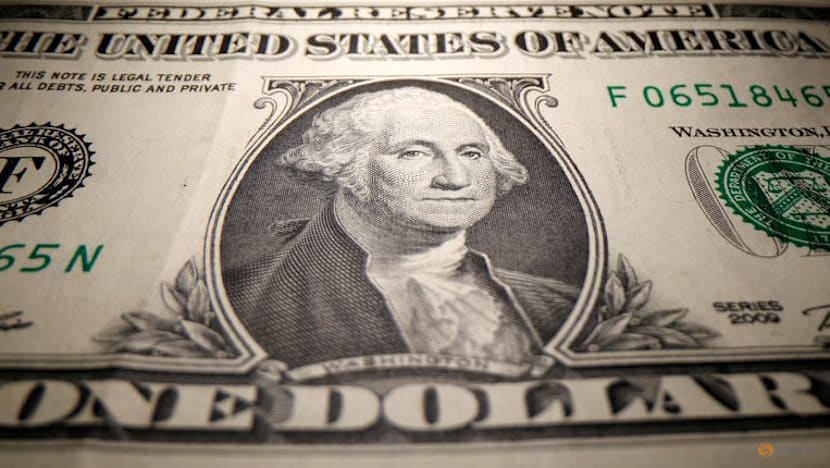Dollar firms as strong US jobs data dim Fed rate-cut expectations

A U.S. Dollar banknote is seen in this illustration taken May 26, 2020. REUTERS/Dado Ruvic/Illustration
NEW YORK :The dollar firmed against most major currencies on Thursday, after losing some ground as signs of faster U.S. job growth in September suggest the Federal Reserve is likely to pause cutting interest rates in December.
Long-awaited data released on Thursday showed that employers added more jobs than economists had expected, but the unemployment rate rose.
Nonfarm payrolls increased by 119,000 jobs in September. Economists polled by Reuters had forecast 50,000 jobs would be added. The unemployment rate rose to 4.4 per cent, from 4.3 per cent in August. The data was delayed because of a government shutdown.
"While higher-than-expected payrolls offer the Fed less justification to cut, markets are still operating in a data vacuum, with only stale September figures and no October report," said Uto Shinohara, senior investment strategist at Mesirow Currency Management.
"An October release would have captured shutdown-related distortions, so the absence of that print removes the risk of an overreaction to a potentially weak headline. Markets now imply roughly 10bps of easing for December, reflecting continued skepticism that the Fed will cut at that meeting."
The yen remained on the back foot, down 0.26 per cent against the dollar at 157.59 yen. The dollar rose as high as 157.89 yen, its strongest since January, putting the Japanese currency on track for a fourth daily decline.
JAPANESE STIMULUS PACKAGE
Since Prime Minister Sanae Takaichi was elected leader of the ruling party last month, the yen has depreciated by around 6 per cent despite rising Japanese bond yields, with markets uneasy about the scale of borrowing needed to fund her stimulus plans.
Japan's new government is preparing a comprehensive economic stimulus package worth more than 20 trillion yen, the biggest since the COVID pandemic, that Takaichi is expected to unveil on Friday.
Japanese Finance Minister Satsuki Katayama said on Tuesday the government was closely watching the market "with a high sense of urgency."
"The consensus is of the view that the new PM will pressure the BoJ into a less hawkish course. This means that the market is fully focused on the JPY carry trade," said Jane Foley, head of FX strategy, Rabobank London.
"There is, however, still scope for investors to be wrong-footed. After all, Takaichi is trying to strengthen relations with the U.S. and won’t want to be associated with a weak JPY policy."
Traders now figure Japanese authorities may intervene somewhere around the 160 mark, as they did last July, or if there are any more sudden moves.
Chief Cabinet Secretary Minoru Kihara said moves were sharp, one-sided and concerning on Thursday.
FED MINUTES SUGGEST DECEMBER RATE CUT IS UNLIKELY
Beyond Japan, the euro, the Swiss franc, the Australian dollar and sterling all fell against the dollar after minutes from October's Federal Reserve meeting showed "many" participants had already ruled out a December cut, while "several" others saw a December cut as likely.
Cleveland Fed President Beth Hammack on Thursday reaffirmed her stance against further rate cuts, citing above-target inflation and already easy financial conditions. She also cautioned that while cuts could be seen as "insurance" for the labor market, they could heighten financial stability risks.
Fed funds futures are pricing an implied 39 per cent probability of a 25-basis-point cut at the December 10 meeting, according to the CME Group's FedWatch tool.
The euro was last down 0.06 per cent at $1.1533, after hitting a two-week low, while sterling was up 0.23 per cent to $1.3087, but at its lowest since early this month.
That left the dollar index, which tracks the U.S. currency against six others, up 0.1 per cent at 100.18, testing a six-month high hit in early November.
"I don’t think the U.S. economic data is that strong, and we think there is room for an insurance cut," said Steve Englander. "But we are not sure the FOMC agrees with us on that.”
In cryptocurrencies, bitcoin hit a seven-month low and was last down 4.43 per cent at $86,521.25.













